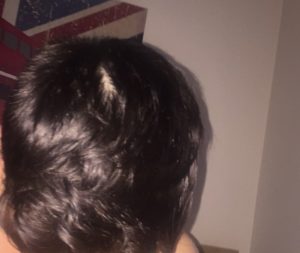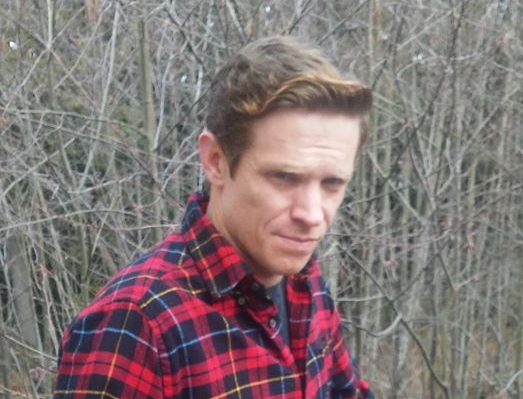I should’ve written up this post sooner. Here are a few hair loss questions I’ve received over the last month or so that are interesting and worth sharing with the community.
1. Baby Hairlines and Early-Onset Hair Loss
Nick Shell [hair loss youtube vlogger] made that theory on what your hairline looked like as a 1 year old determined what you’d be as a 35 yr old or middle aged man. What do you think of that? I found a 1 year aka 12 month pic of myself and I pretty much had a straight hairline, maybe a NW 1-2. I think I may have debunked his theory because I can’t imagine my hair loss just stopping at this, since I heard the earlier your hairline goes up, the more aggressive your hair loss will be.
My response
Prince William had a straight hairline at age one, I wouldn’t place much stock in that theory. Yes, in general, the earlier you start losing your hair, the balder you’ll be. But there are exceptions, and some men recede to slightly beyond the “mature” point and never experience any significant hair loss after that for decades, occasionally never. That’s actually fairly common, for young men to recede a bit past the mature point, from what I’ve observed.
A little recession doesn’t necessarily indicate early baldness — the maturation process itself involves mild recession — widespread thinning does. Having your hair checked out for signs of miniaturization may be wise if you’re concerned.
2. When Mature Hairlines Go Bald
I heard most of the time hairlines don’t stay at the mature point and usually get worse. So do people like me, who just have the hairline going back, eventually become a Norwood 6 or higher? Or is it that only diffuse thinners become NW6+?
Sure, most people get worse (i.e. go bald) eventually. Around 80% of men go bald to some degree in their lifetimes — and the mature hairline typically doesn’t count as “going bald.” Where your hair loss stops is ultimately a mystery coded in genes.
Most “bad” cases of hair loss, where men become NW 6 or greater, start when men are 26 or younger, from what I’ve gathered. Diffuse thinners are certainly very susceptible to going totally bald, as are men who start the balding (not maturing) process at a young age. My dad had a mature hairline until he was in his 50s and now is a NW 3 v. Many men keep their mature hairlines for decades and experience mild hair loss later in life, and some even keep their mature hairlines for life.
3. Crown Thinning?
This is a second email exchange I had with the young man featured in this post: 19 Year Old in a “Life or Death” Situation – Wants to Know if His Hairline is Maturing or Balding.
I’m pretty certain my hairline is a maturing one so I’ve come to rest with that. My main concern is this part around my crown. It’s very strange because it isn’t always like this? Sometimes it’s undetectable and other times it’s as shown in the picture? It’s only detectable when I use the camera flash otherwise it’s hidden within my hair. I can’t tell whether it’s naturally this way or whether my hair is thinning around this area, what does it look like to you?
Looks pretty normal to me, honestly. Again, there’s a major color contrast between your hair color and the scalp, so the cowlick is going to be somewhat noticeable. Lighting can definitely play a role too, and certain styles can accentuate a cowlick. Seeing a dermatologist or other professional is always the ideal, but if that’s not feasible, you could just take a picture of your hairline/crown every month or so. If it’s truly early-onset, aggressive MPB, which i don’t think it is, the symptoms will likely manifest fairly soon.
4. Hairs Vary in Density
Is it normal to find hairs of different thickness? I’ve noticed a few times that some of the hair I’ve shed is different in thickness. Usually my hair is always the same, but on a rare occasion, I’ll find a hair that is extremely coarse and jet black in comparison to the overall majority which is a little lighter and finer?
Yes, having hairs of varying densities is normal to a degree. Anywhere from 10-20% of our hairs are naturally “miniaturized” from what I’ve gathered. If more than 20% are miniaturized, that’s often a sign of MPB. I’ve noticed finding occasional, super-thick hairs as well; honestly, I don’t know why we have those super hairs or what they indicate, but it’s something I’ve been meaning to look into!
5. Predicting Hair Loss Based on Genetics
I have one last thing that I want to run by you then I’ll stop spamming your emails. Is hair a mix of genes coming from various individuals in the family or do you take after one individual? My juvenile hairline resembled my grandmother’s and my crown sat in the same place as her’s though my maturing hairline is a lot like my grandfather’s; it looks like it’s maturing into the same hairline as his, although his didn’t mature until late 20’s. Is the fact my hairline’s like his a good thing or do all Norwood 2’s have the same characteristic look?
All Norwood 2’s are definitely not created equal — some are quite recessed, e.g. Stephen Colbert or Johnny Depp, others have much less recession, e.g. Robert Downey Jr (some might call him a 1 or 1.5). I wouldn’t say it’s a “good thing” or bad thing that your hairline is like your grandfather’s. And yes, it’s a mix of genes, but men often seem to have a strong resemblance, hairline-wise, to a particular relative such as a father or grandfather. Some men inherit perfect hairlines from their fathers, and bald spots from their grandfathers. And it can skip generations. So the whole puzzle is rather complicated, but all based on genetics.
Have Hair Loss Questions? Shoot Me an Email
I’d like to start doing these question round-ups a little more often. Feel free to contact me directly if you have any questions you’d like me to tackle for this blog.
Robert Price is a writer, consumer advocate, and hair loss researcher with thousands of hours of experience in the field. His goal is to keep you out of the hair loss rabbit hole, underworld, or whatever you want to call it. He founded Hair Loss Daily, the unbiased hair loss blog, in 2016. You can learn more about Robert in the my story section of this website.


